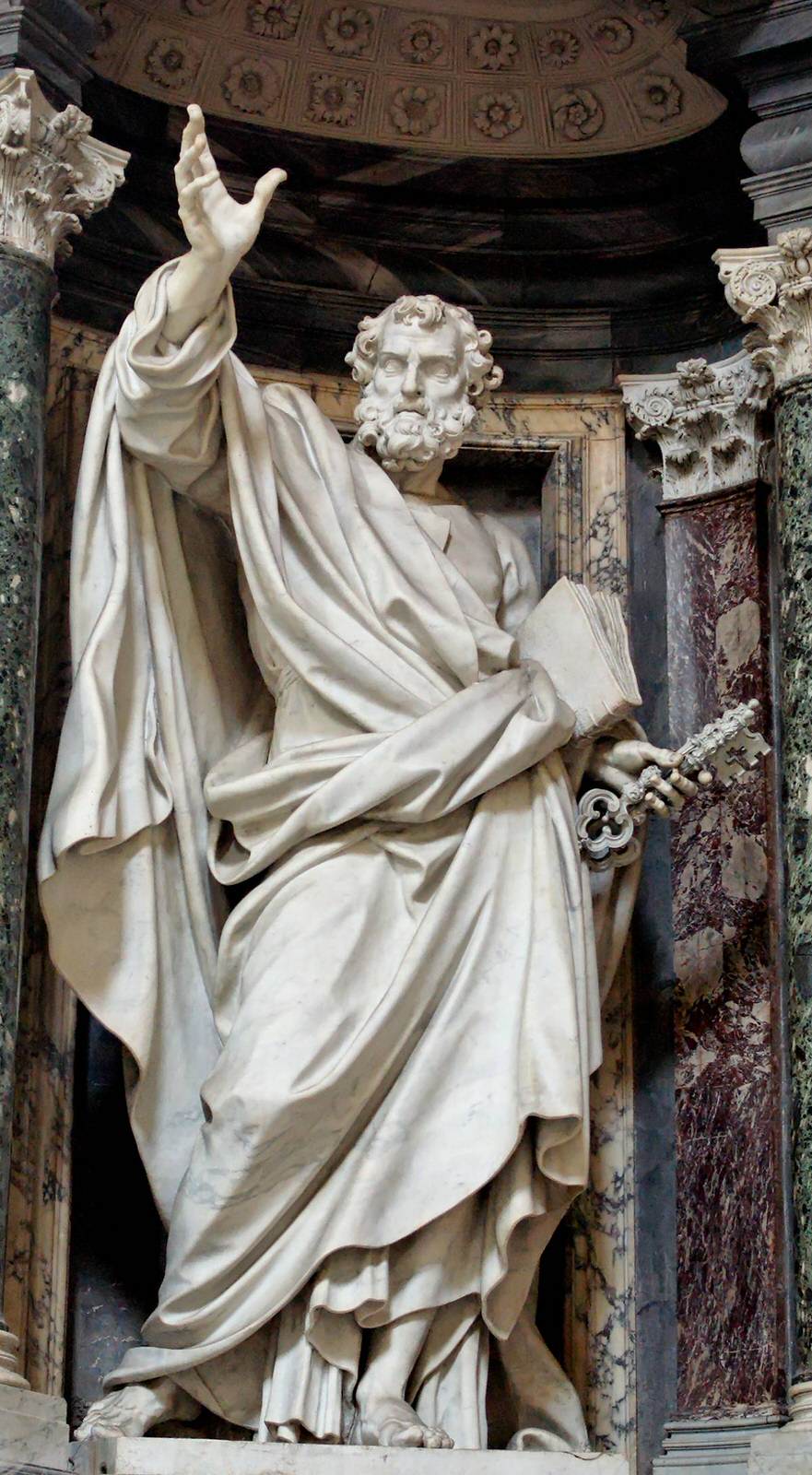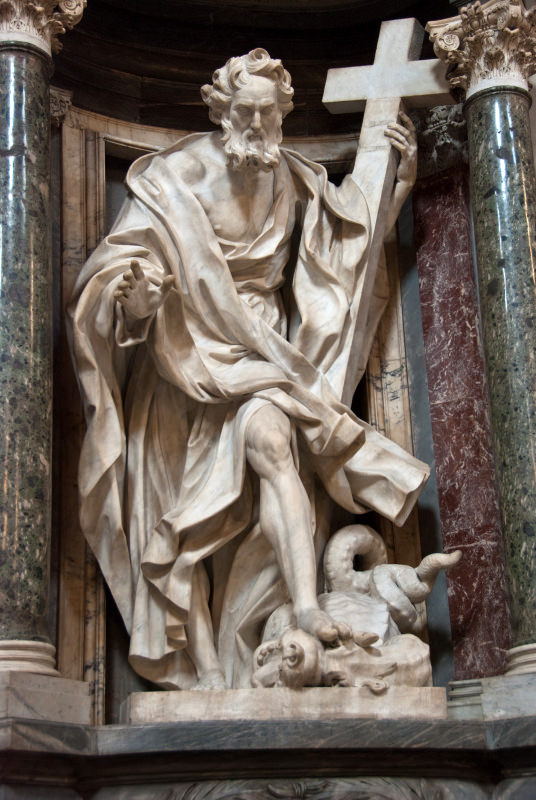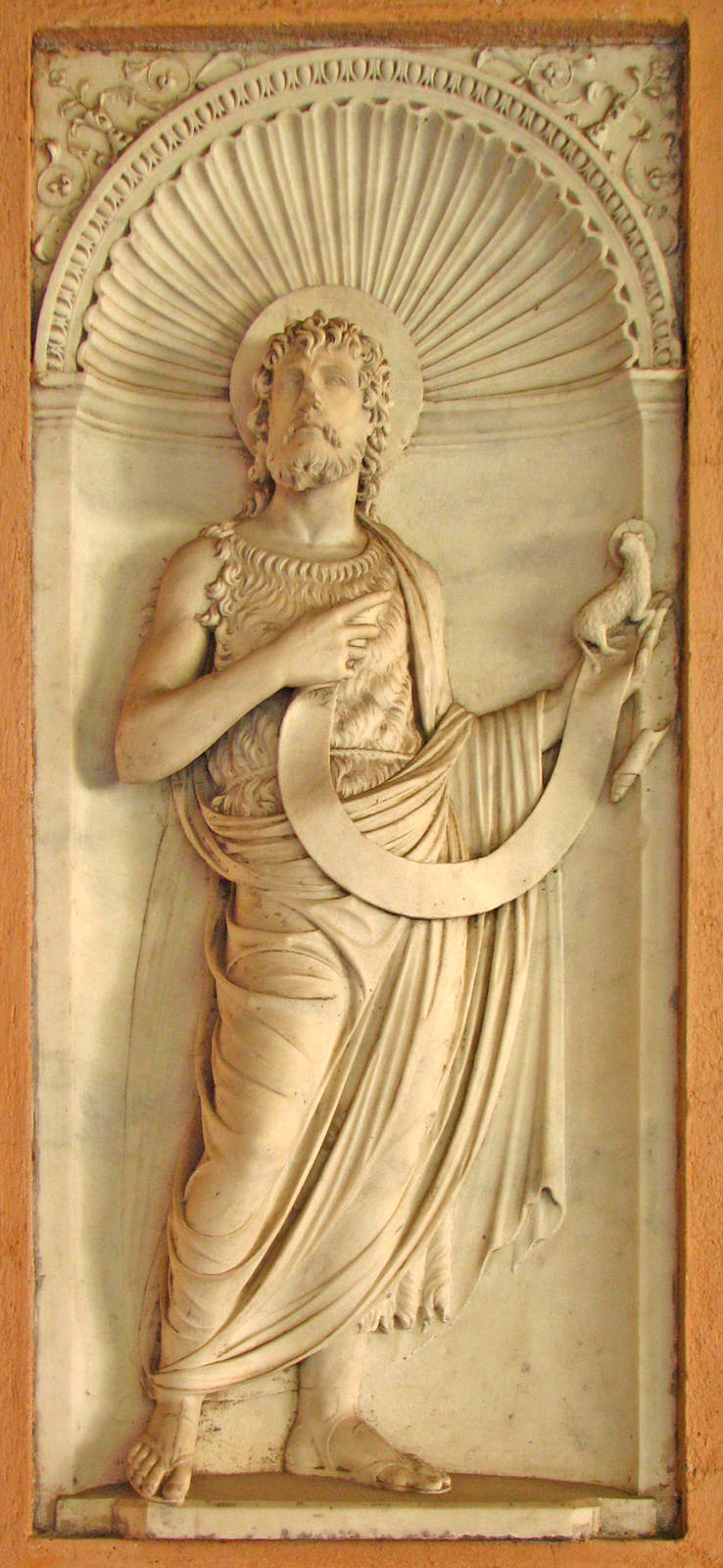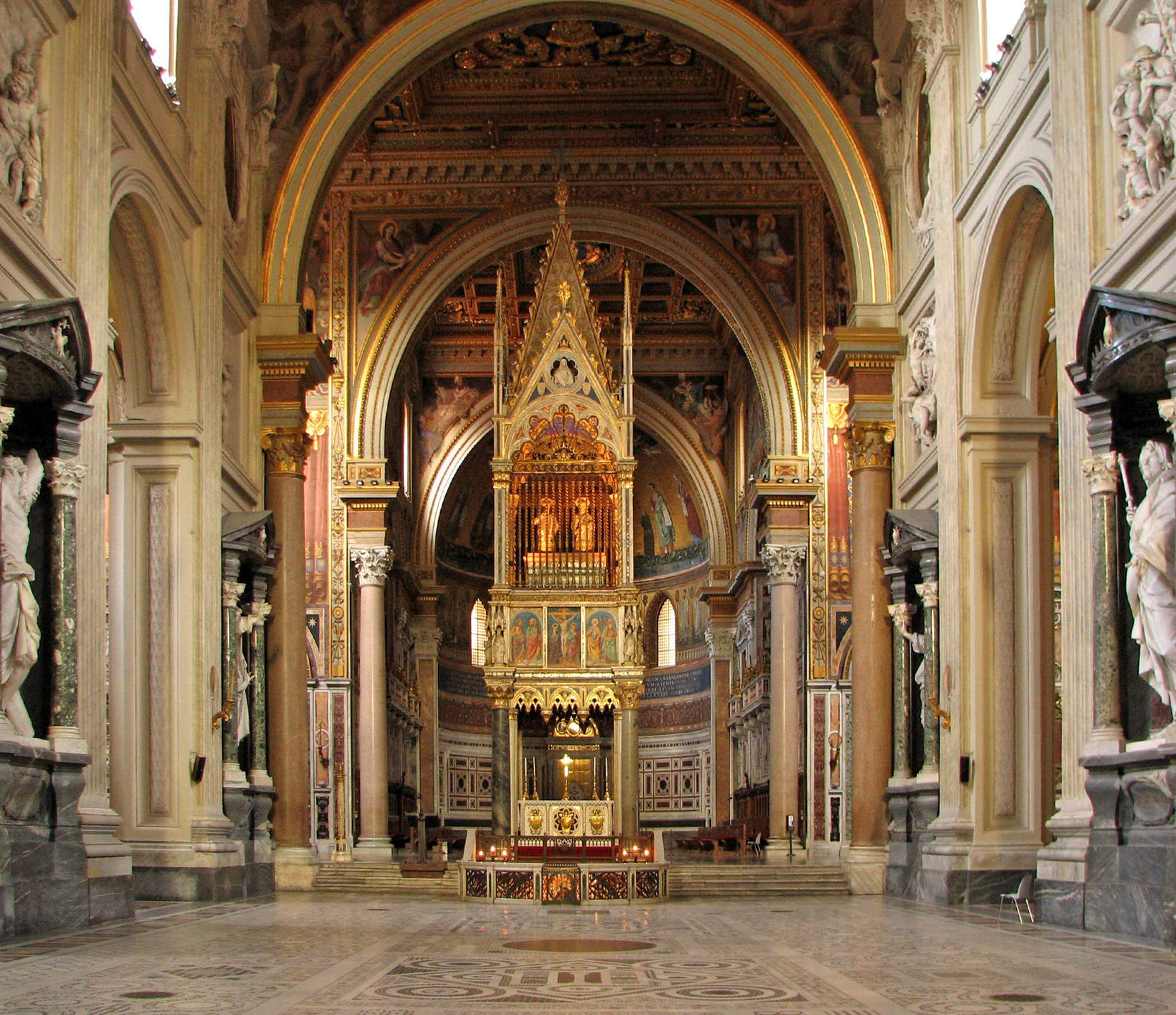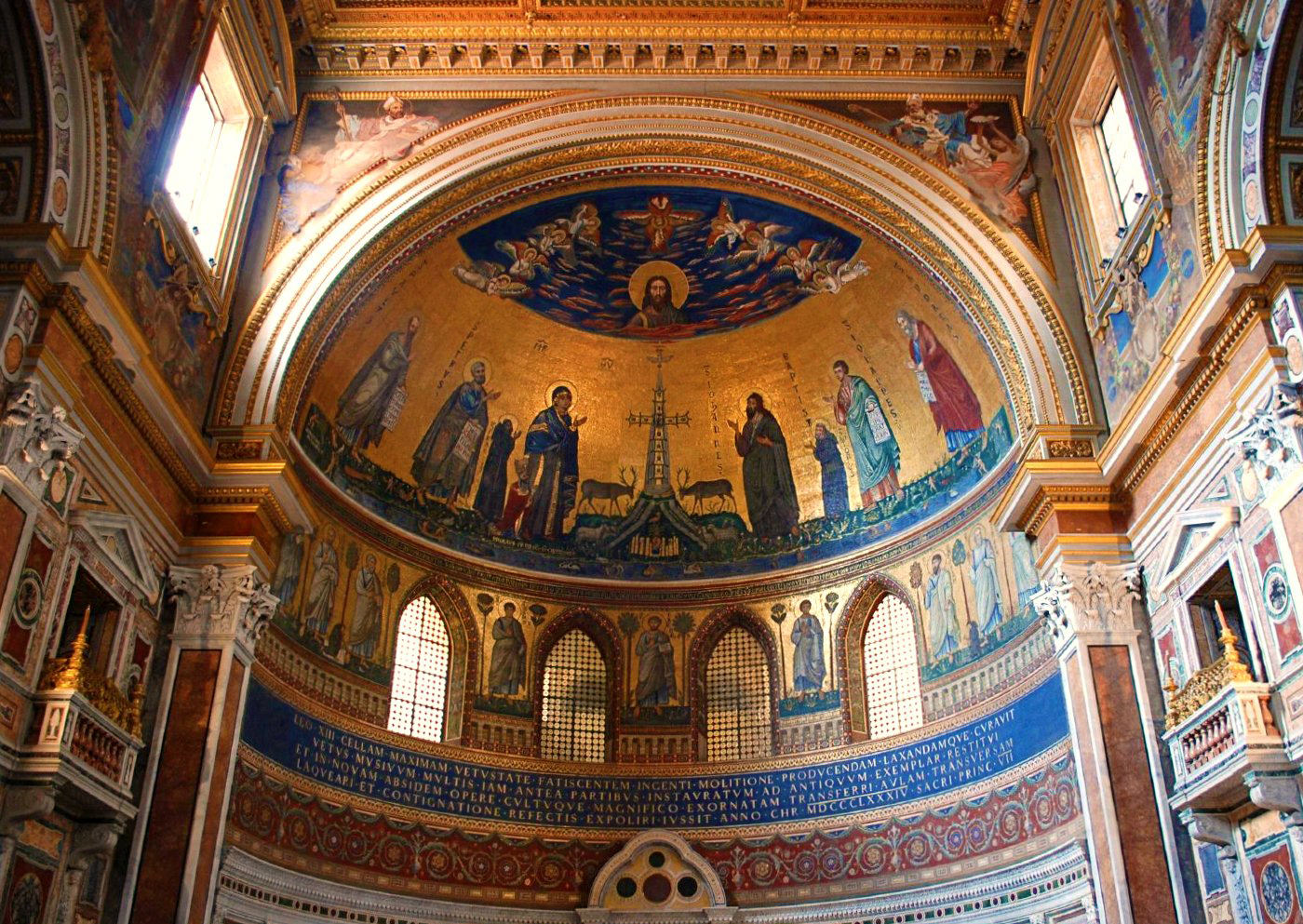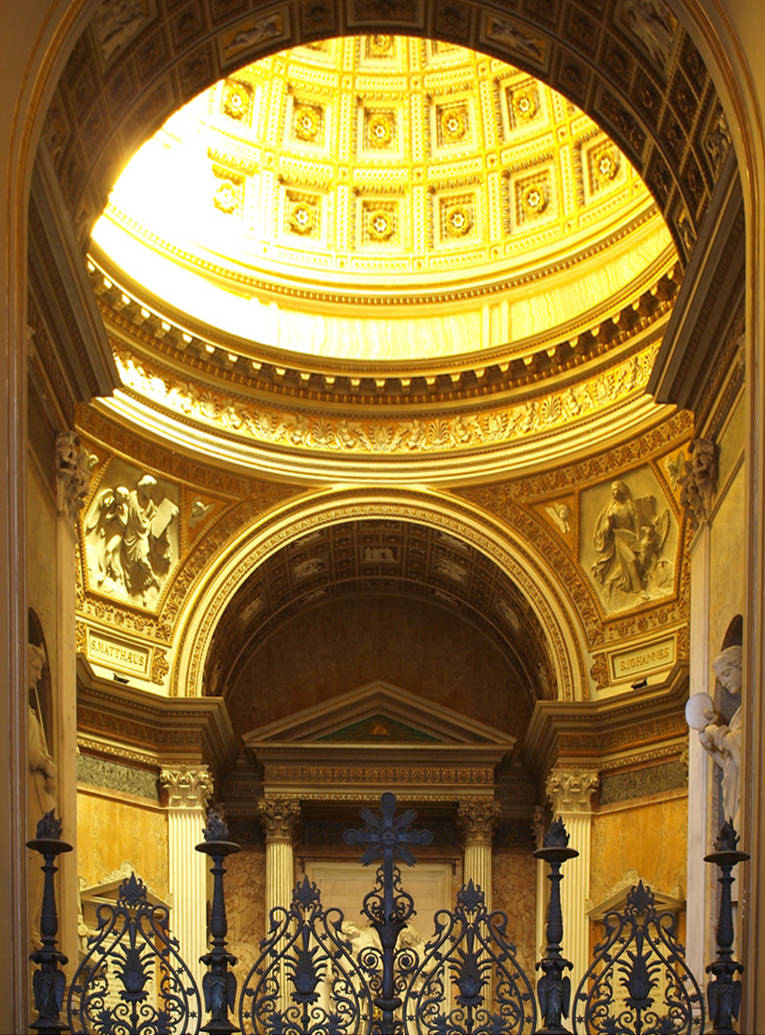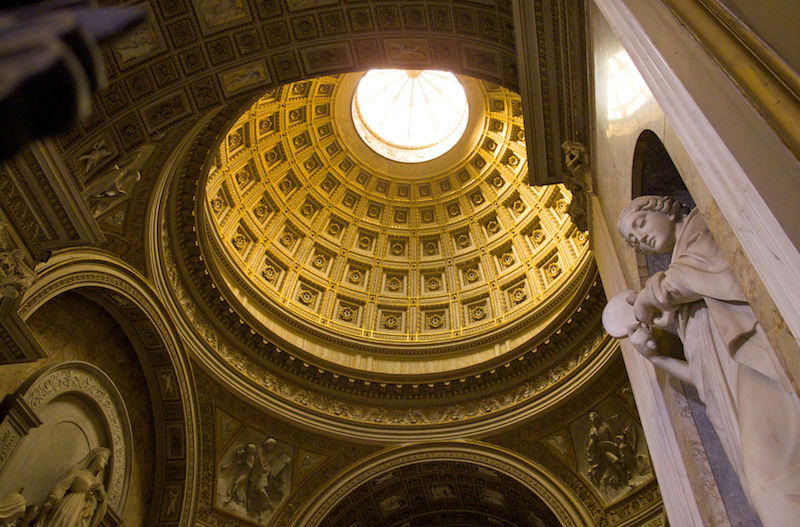Basillica of St. John Lateran
(San Giovanni in Laterano)
Named for John the Baptist
Rome, Italy
The Papal Archbasilica of St. John Lateran is the cathedral church of the Diocese of Rome and the official ecclesiastical seat of the Bishop of Rome.
As the cathedral of the Bishop of Rome, it ranks above all other churches in the Catholic Church, including St. Peter's Basilica. For that reason, unlike all other Roman Basilicas, it holds the title of Archbasilica. The archbasilica's name in Latin is Archibasilica Sanctissimi Salvatoris et Sanctorum Iohannes Baptista et Evangelista in Laterano, which translates in English as Archbasilica of the Most Holy Saviour and Saints John the Baptist and the Evangelist at the Lateran.
The Lateran Palace fell into the hands of the emperor when Constantine I married his second wife Fausta, sister of Maxentius. Known by that time as the "Domus Faustae" or "House of Fausta," the Lateran Palace was eventually given to the Bishop of Rome by Constantine. The actual date of the gift is unknown but scholars believe it had to have been during the pontificate of Pope Miltiades, in time to host a synod of bishops in 313 that was convened to challenge the Donatist schism, declaring Donatism as heresy.

Coat of arms of Pius IV Medici. From the ceiling of the Basilica of St. John Lateran
Photograph by Marie-Lan Nguyen3
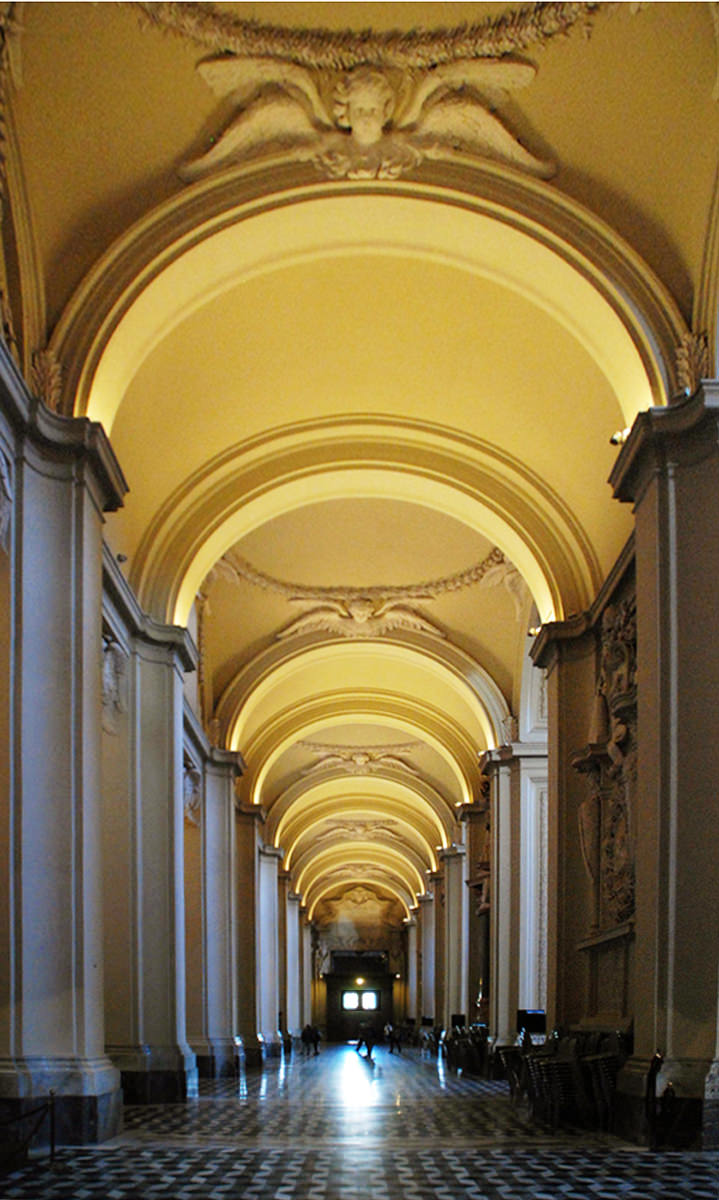
Side Aisle of St. John Lateran Basillica
(edited: perspective adjustment)
Photograph by Charlie Chapman 754
For 300 years the early Catholics were tortured to death for the faith. St. Helen, Constantine's mother, had been praying and talking to her son for years. Finally Constantine was converted and things changed. Through the prayers of a holy mother an empire was conquered.

